Archaeological sites and monuments
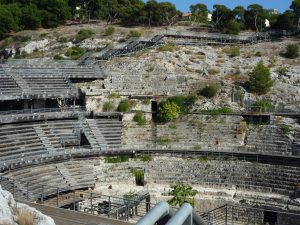 Anfiteatro romano (Roman Amphitheatre): it dates from the end of the first and the first half of the second century A.D.
Anfiteatro romano (Roman Amphitheatre): it dates from the end of the first and the first half of the second century A.D.
Phone: +39 366 256 2826
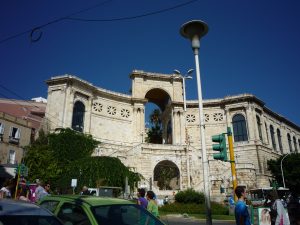
Bastione San Remy (Saint Remy rampart): in the heart of the old town, it is one of the most important monuments in Cagliari. Built on the ancient defensive curtains of the medieval boundary walls, owes its name to the first Piedmontese Viceroy, Baron of Saint Remy.
between via Manno and via Garibaldi
09100 Cagliari
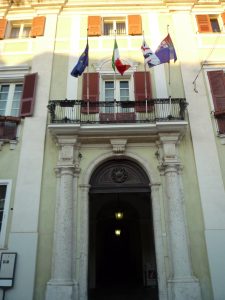 Palazzo Reale (Royal Palace): it is located in Piazza Palazzo, in Castello district. It was the ancient residence of the Viceroy under the rule of the Aragonese, the Spanish and the Savoy. Today it is the seat of the Prefecture and the Province of Cagliari.
Palazzo Reale (Royal Palace): it is located in Piazza Palazzo, in Castello district. It was the ancient residence of the Viceroy under the rule of the Aragonese, the Spanish and the Savoy. Today it is the seat of the Prefecture and the Province of Cagliari.
09100 Cagliari
 Bastione di Santa Croce (Santa Croce rampart): it is situated in the street of the same name (a few steps from the Elephant Tower) and it offers one of the most beautiful panoramic views from the uptown. It developed in Castello starting from the 13th century, but it was in the 15th century that it reached its maximum expansion.
Bastione di Santa Croce (Santa Croce rampart): it is situated in the street of the same name (a few steps from the Elephant Tower) and it offers one of the most beautiful panoramic views from the uptown. It developed in Castello starting from the 13th century, but it was in the 15th century that it reached its maximum expansion.
Address: Via Santa Croce, 09100 Cagliari
Necropoli di Tuvixeddu (Tuvixeddu Necropolis): it is the m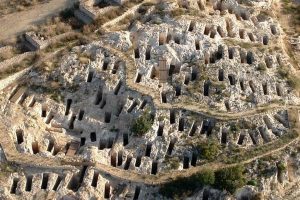 ost ancient and representative burial area of the city. It is a Phoenician-Punic necropolis, the largest in the Mediterranean basin, developed between the 6th and 3rd century BC.
ost ancient and representative burial area of the city. It is a Phoenician-Punic necropolis, the largest in the Mediterranean basin, developed between the 6th and 3rd century BC.
09100 Cagliari
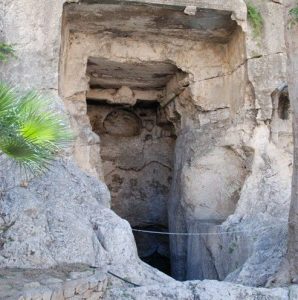 Grotta della Vipera (Viper’s Cave): Atilia Pomptilla sepulchre, dating 1st Century A.C. is known as Grotta della Vipera, because of the decoration in the frontal part of the sepulchre, representing two vipers. It is is a funerary hypogeum built by the Roman Lucio Cassio Filippo in honour of his wife, Atilia Pomptilla, between the second half of the first century BC and the first half of the second century A.D.
Grotta della Vipera (Viper’s Cave): Atilia Pomptilla sepulchre, dating 1st Century A.C. is known as Grotta della Vipera, because of the decoration in the frontal part of the sepulchre, representing two vipers. It is is a funerary hypogeum built by the Roman Lucio Cassio Filippo in honour of his wife, Atilia Pomptilla, between the second half of the first century BC and the first half of the second century A.D.
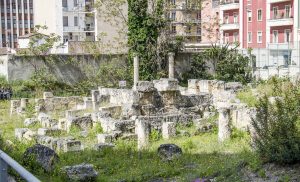
Villa di Tigellio (Tigellio Villa): one of the most important archaelogical site of Sardinia, it is an elegant home in a residential area of the Roman city of Karales, built in the 1st century BC.
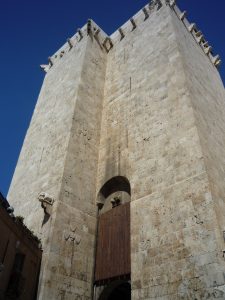 Torre dell’Elefante (Elephant Tower): defensive structure designed by the local architect Giovanni Capula and built by the Pisans in 1307. It is decorated by the marble statue of an elephant, exposed on the facade, perhaps a symbol of the Pisan maritime power. Nowadays the Elephant Tower is open to visitors, by the entrance at the right side of the church of St. Joseph.
Torre dell’Elefante (Elephant Tower): defensive structure designed by the local architect Giovanni Capula and built by the Pisans in 1307. It is decorated by the marble statue of an elephant, exposed on the facade, perhaps a symbol of the Pisan maritime power. Nowadays the Elephant Tower is open to visitors, by the entrance at the right side of the church of St. Joseph.
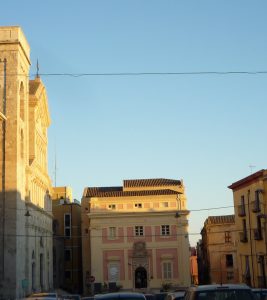 Antico Palazzo di Città (Former Town Hall): it is a historic building of Cagliari, the town hall from the Middle Ages to the early years of the twentieth century. The building hosts temporary exhibitions and it also houses three permanent civic collections, the “Manconi-Passino” Ethnographic Fund, the “Ingrao“ Ceramic Fund, the “Ingrao” Fund of Sacred Art.
Antico Palazzo di Città (Former Town Hall): it is a historic building of Cagliari, the town hall from the Middle Ages to the early years of the twentieth century. The building hosts temporary exhibitions and it also houses three permanent civic collections, the “Manconi-Passino” Ethnographic Fund, the “Ingrao“ Ceramic Fund, the “Ingrao” Fund of Sacred Art.
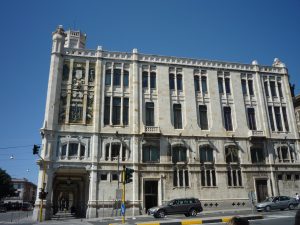 Palazzo di Città (Town Hall): it is the municipal seat of Cagliari. The building is located in Via Roma, in the lower part of the district of Stampace. In 1896 the City Council decided to move the Town Hall to via Roma, in the area that overlooks the harbour. The building was inaugurated in 1907.
Palazzo di Città (Town Hall): it is the municipal seat of Cagliari. The building is located in Via Roma, in the lower part of the district of Stampace. In 1896 the City Council decided to move the Town Hall to via Roma, in the area that overlooks the harbour. The building was inaugurated in 1907.
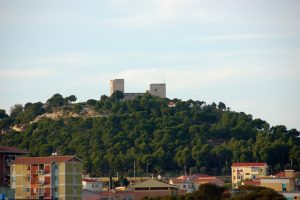 Castello di San Michele: it is located on one of the highest hills of Cagliari. It is from the Byzantine Period or first “Giudicale” Period (10th century A.D.) and it had the defensive function of Santa Igia. Today the castle offers a space for exhibitions, lectures and other cultural events.
Castello di San Michele: it is located on one of the highest hills of Cagliari. It is from the Byzantine Period or first “Giudicale” Period (10th century A.D.) and it had the defensive function of Santa Igia. Today the castle offers a space for exhibitions, lectures and other cultural events.
Churches
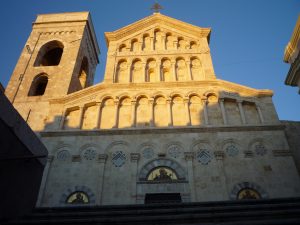 Cattedrale di Santa Maria (Saint Mary Cathedral): built in the 13th century in the Pisan-Romanesque style, it later underwent trasformations in the Gothic, Baroque and Neo-Romanesque style.
Cattedrale di Santa Maria (Saint Mary Cathedral): built in the 13th century in the Pisan-Romanesque style, it later underwent trasformations in the Gothic, Baroque and Neo-Romanesque style.
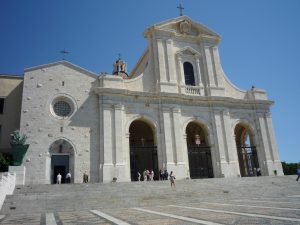 Basilica e Santuario di N.S. di Bonaria: religious complex consisting of a small Catalan Gothic church dating back to the 14th century (the Sanctuary) and the Basilica, which was built around the 18th century in Neoclassical style.
Basilica e Santuario di N.S. di Bonaria: religious complex consisting of a small Catalan Gothic church dating back to the 14th century (the Sanctuary) and the Basilica, which was built around the 18th century in Neoclassical style.
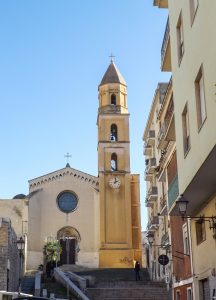 Chiesa di Sant’Eulalia (Church of Sant’Eulalia): It was built in 14th century by Catalans, in the area were existed the Pisan tower named Lapola (ancient name of the Marina district) and the medieval Church of S. Maria del Porto.
Chiesa di Sant’Eulalia (Church of Sant’Eulalia): It was built in 14th century by Catalans, in the area were existed the Pisan tower named Lapola (ancient name of the Marina district) and the medieval Church of S. Maria del Porto.
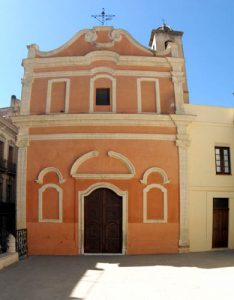 Chiesa di Sant’Efisio (Church of Sant’Efisio): it is situated in the medieval district of Stampace and its origins date back to 430 A.D. It was built above a cave where, according to the tradition, the Saint was detained before his martyrdom.
Chiesa di Sant’Efisio (Church of Sant’Efisio): it is situated in the medieval district of Stampace and its origins date back to 430 A.D. It was built above a cave where, according to the tradition, the Saint was detained before his martyrdom.
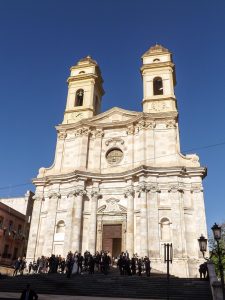 Chiesa di Sant’Anna (ST. Anna’s church): it is a Baroque church, located in the heart of the Stampace district, in the same place where originally, there was a small temple, date back to Pisan period, which was demolished, in order to give way to the new building.
Chiesa di Sant’Anna (ST. Anna’s church): it is a Baroque church, located in the heart of the Stampace district, in the same place where originally, there was a small temple, date back to Pisan period, which was demolished, in order to give way to the new building.